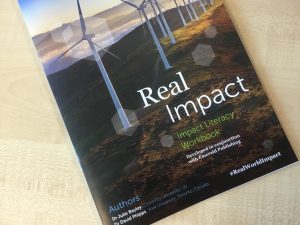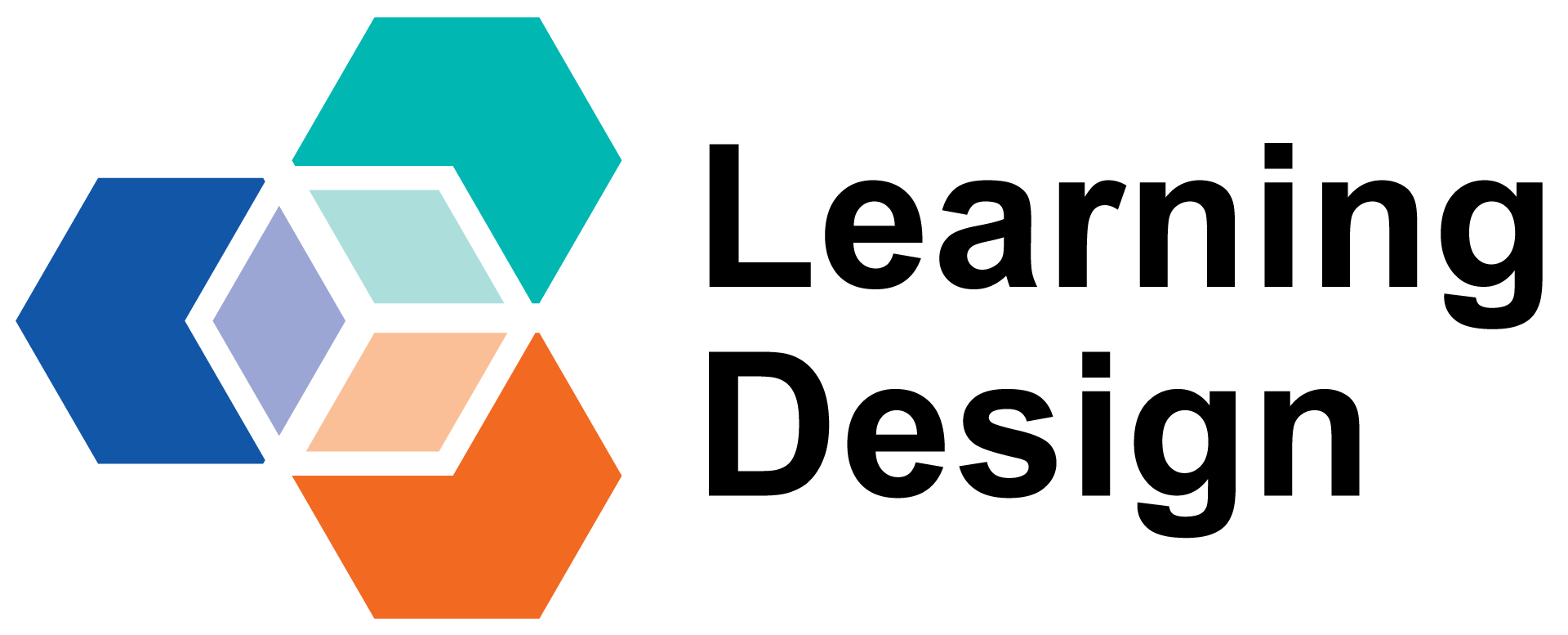Always keen to get on with the job at hand, I’ve never really thought about impact as a ‘thing’. Yet if I stop and think about it, everything I do impacts someone or something. As a Learning Designer working on Social Science modules, I attended the Making a Difference: Impact in the Social Sciences conference in April, and it opened my eyes to the importance of thinking as well as doing.
Using the Impact Literacy Workbook I picked up at the conference, I hope to extend – and apply – my newfound knowledge to my work and future research. The workbook includes exercises that facilitate research planning, considering the problem, mobilisation and impact at an early stage. It was written by Dr Julie Bayley and Dr David Phipps, and an online copy is available from Emerald Publishing.

Figure 1: Impact Literacy Workbook
Impact is purpose, else why ‘do’ anything?
Think of one thing you’ve done this week…
- Why did you do it?
- What was the impact?
- Could you have created greater impact if you’d started by planning/designing for it?
The most important message I brought away from the Impact conference is to start by considering the desired impact first, then working backwards and planning activities in a way that maximises the likelihood of success.
Having impact as a Learning Designer
Now that I’ve thought about it, my overall desired impact is improving the student experience, maximising pass rates and improving retention—all of which should result in more students achieving their qualification goals. With this in mind, I can now ask myself (of my daily work), “Will this help to improve student outcomes?”, and by revisiting this question regularly, also asking, “How?”, I can steer my work and stay on target to succeed in my intended impact.
It is also a multi-layered system. Thinking about the work our team has done around reflective learning and personal development planning (PDP), this is one layer of impact that feeds into the bigger picture. The work Sue has done on assisting students with PDP is an example of considering impact in design—experimenting with different tools, working with students to gather evidence, and analysing success. The alternative would be giving students a tool and telling them to get on with it, an approach that would save time in delivery, but not necessarily lead to the desired impact.
Collaboration is key to achieving impact
Working in partnership with academics during module design, I can draw on evidence from practice elsewhere in the university (and beyond) and scholarship activities to advise on effective approaches, and where no evidence exists I can consult with students via the Curriculum Design Student Panel.
Our student panel provides an excellent opportunity to collaborate with end-users, gathering feedback on aspects of design early in the process. This helps with steering towards maximum impact. It also allows for additional tweaking of activities in development to make them more useful for students, and increases the likelihood of outputs contributing to delivering our intended impact.
And if something goes wrong?
Sometimes we’re not as successful as we’d hoped, but that’s not the end, it’s something to learn from—contributing to the next project. The best evidence isn’t necessarily based on what went well, the lessons learned from what didn’t go so well can be more informative. And that’s what creates the greatest impact, reflecting and learning from past experiences.
